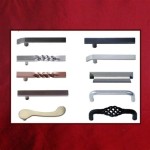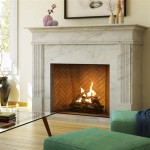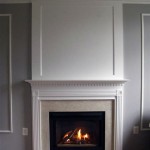Fireplace Wood Stove Insert Installation: A Comprehensive Guide
Installing a fireplace wood stove insert can significantly improve the heating efficiency of an existing fireplace, turning a potentially drafty and inefficient feature into a powerful and cost-effective heat source. However, the process requires careful planning, adherence to safety regulations, and a solid understanding of the steps involved. This article provides a comprehensive overview of fireplace wood stove insert installation, covering key considerations and essential steps.
Before initiating any installation, it's crucial to verify local building codes and permitting requirements. Many jurisdictions necessitate permits for wood stove insert installations to ensure compliance with safety standards and environmental regulations. Failure to obtain the necessary permits can result in fines and potential removal of the installed insert. Furthermore, inform your homeowner's insurance company of your plans, as changes impacting heating systems may affect policy coverage.
A thorough inspection of the existing fireplace and chimney is paramount. Inspect the chimney for cracks, deterioration, or blockages. The chimney must be in good working order to safely vent combustion byproducts. If the chimney exhibits any signs of damage, it needs to be repaired or relined before installing the insert. Professional chimney sweeps can perform a comprehensive inspection and recommend necessary repairs.
Selecting the Right Wood Stove Insert
Choosing the appropriate wood stove insert for your fireplace is a critical decision. Several factors influence this selection, including the size of the area you intend to heat, the dimensions of your existing fireplace opening, and your desired heating efficiency. Wood stove inserts are rated by their BTU (British Thermal Unit) output, which indicates the amount of heat they can generate per hour. Determine the square footage of the area you want to heat and select an insert with a BTU rating that matches those needs. Over-sizing an insert can lead to uncomfortable temperatures, while under-sizing will result in insufficient heating.
Measure the height, width, and depth of your fireplace opening to ensure the chosen insert fits properly. Many inserts come with trim kits that can cover minor size discrepancies, but significant differences may necessitate modifications to the fireplace opening, which can be costly and time-consuming. Consider the insert's efficiency rating, which indicates how effectively it converts fuel into heat. Higher efficiency ratings translate to lower fuel consumption and reduced emissions. Look for inserts that meet or exceed EPA (Environmental Protection Agency) standards.
Also, evaluate the specific features of different models, such as the presence of a blower fan, which can significantly improve heat circulation. Consider the material used in the insert's construction, with cast iron and steel being common options. Cast iron retains heat well, while steel heats up quickly. Finally, assess the aesthetics of the insert to ensure it complements your home's décor.
Preparing the Fireplace and Chimney
Proper preparation of the fireplace and chimney is essential for safe and efficient insert operation. Begin by thoroughly cleaning the fireplace, removing all ash, soot, and debris. Inspect the firebox for any cracks or damage, and repair them as needed. The firebox must be structurally sound to support the weight of the insert and withstand the high temperatures generated during operation.
Chimney relining is often required when installing a wood stove insert. Relining involves installing a stainless-steel liner inside the existing chimney to provide a safe and airtight flue for venting combustion gases. This liner protects the chimney from corrosion and ensures proper draft. The liner should be sized appropriately for the insert and installed according to the manufacturer's instructions and local building codes. A professional chimney sweep or installer can perform this task.
The hearth, the non-combustible area in front of the fireplace opening, must be of adequate size to protect the surrounding floor from sparks and embers. Check local building codes for hearth extension requirements. If the existing hearth is insufficient, it may need to be extended with non-combustible materials such as brick, stone, or tile.
Installing the Wood Stove Insert
Installing the wood stove insert requires careful attention to detail and adherence to the manufacturer's instructions. Before beginning, gather all necessary tools and materials, including the insert itself, a chimney liner kit, insulation, sealing materials, and hand tools such as wrenches, screwdrivers, and a level.
Carefully position the insert in front of the fireplace opening. Connect the chimney liner to the insert's flue outlet and feed it up the chimney. Ensure the liner is properly sealed and secured to both the insert and the chimney. Follow the manufacturer's instructions for insulating the space between the liner and the chimney to prevent heat loss and improve draft.
Once the liner is in place, slide the insert into the fireplace opening. Ensure it is centered and level. Connect any necessary electrical components, such as the blower fan, according to the manufacturer's instructions. Seal any gaps between the insert and the fireplace opening with high-temperature sealant to prevent air leaks. Install the trim kit or surround to cover any remaining gaps and provide a finished appearance.
Post-Installation Checks and Precautions
After installing the wood stove insert, conduct a thorough inspection to ensure everything is properly connected and functioning correctly. Check for any air leaks around the insert and chimney liner. Test the blower fan to ensure it is circulating air effectively. Perform a test burn to verify that the insert is drafting properly and that smoke is venting through the chimney.
Install carbon monoxide detectors on each level of your home, particularly near sleeping areas. Carbon monoxide is a colorless, odorless gas that can be deadly. Regularly inspect the chimney and liner for damage or deterioration. Schedule annual chimney sweeps to remove creosote buildup, which is a flammable substance that can cause chimney fires. Store firewood away from the insert and other heat sources. Follow the manufacturer's instructions for operating and maintaining the insert. Educate all household members on safe operation procedures.
Wood Stoves And Fireplaces How To Install A Burning Fireplace Insert Hearth Com Forums Home

How To Install A Fireplace Insert Diy Save Money

Fireplace Insert Installation Wood Burning Inserts

Custom Installation Of Fireplace Inserts Insert Installations Sierra Hearth And Home

Why A Wood Burning Fireplace Insert Bethesda Md Service

Why A Wood Burning Fireplace Insert Bethesda Md Service

Wood Fireplace S Installation Chimney Sweeps Of America

Wood Burning Fireplace Inserts Insert Installation

Lodi Wi Installing Fireplace Insert Remodel

Wood Burning Inserts Buck Stove








